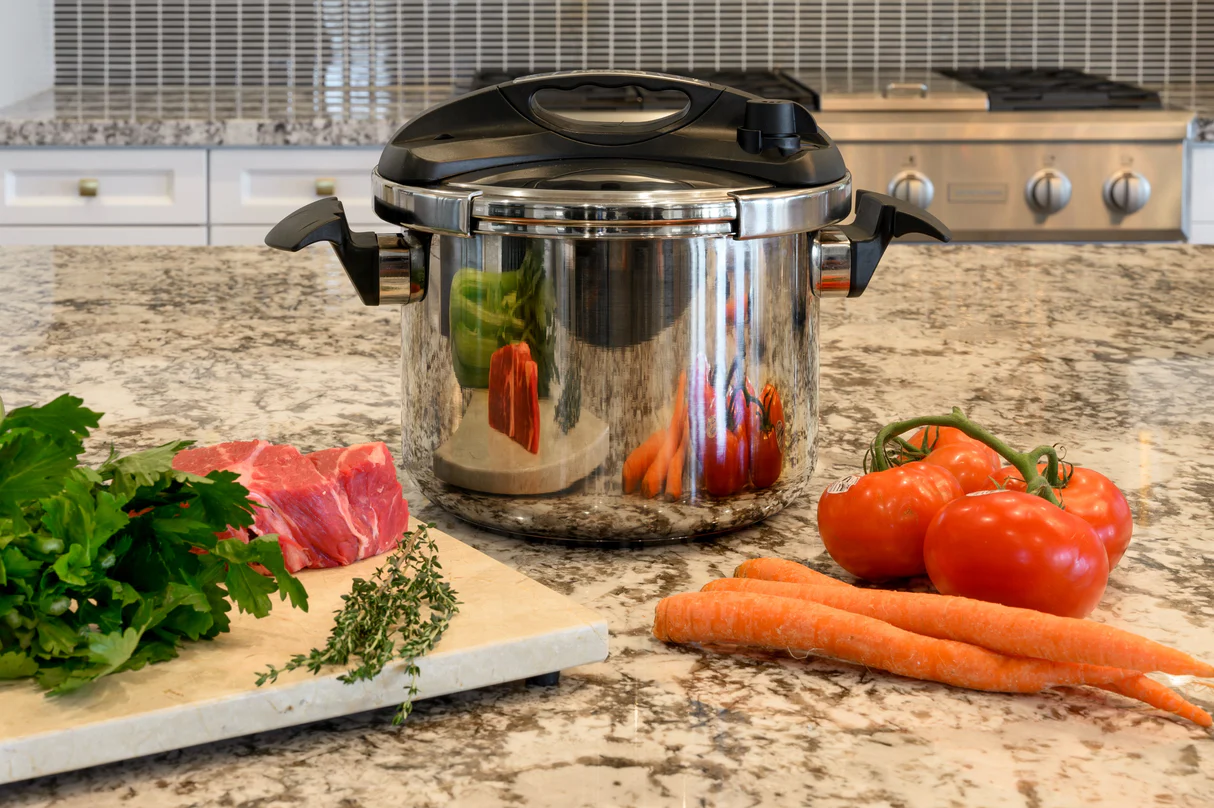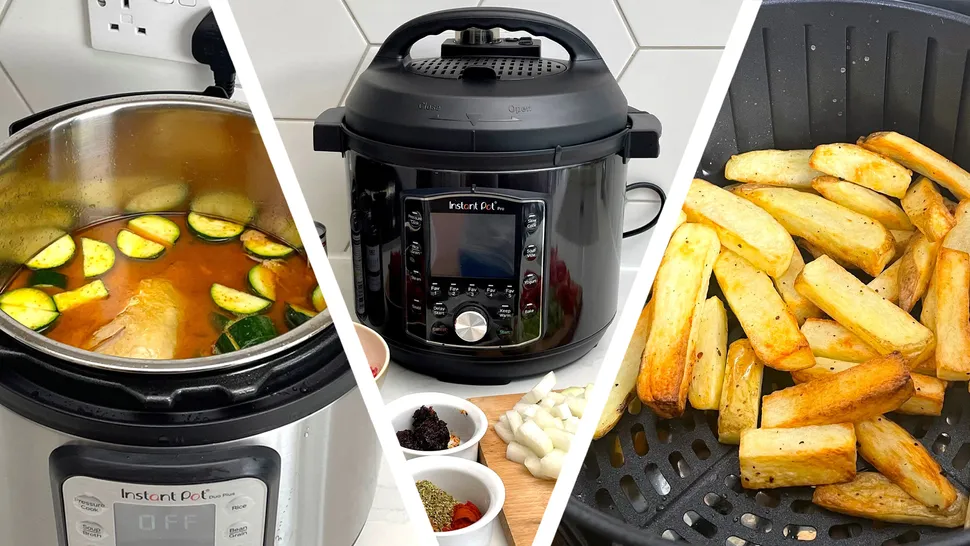Welcome to the wonderful world of pressure cooking! If you’ve just unboxed your shiny new electric pressure cooker or have been using a stovetop model for years, you know the magic it brings to the kitchen—turning tough cuts of meat tender in minutes and cooking beans from scratch in under an hour. But what if I told you there’s a technique that unlocks even more potential? Let’s talk about What Is The Pot In Pot Method, or as fans affectionately call it, the PIP method. This simple but brilliant technique is about to become your new best friend for creating amazing meals with minimal fuss.
So, What is the Pot in Pot Method, Exactly?
The pot in pot method is a pressure cooking technique where you place a separate, smaller, oven-safe container on a trivet inside the main pot of your pressure cooker. You add water to the main pot, which creates the steam needed to build pressure. This steam then circulates around the inner container, cooking the food inside it gently and evenly with indirect heat.
Think of it like creating a mini-oven or a double boiler inside your pressure cooker. Instead of your food being in direct contact with the liquid at the bottom of the pot, it’s elevated and cooked by the superheated steam. This opens up a whole new realm of possibilities beyond stews and soups.
Why You Should Absolutely Try the Pot-in-Pot (PIP) Method
At first, it might sound like an extra, fussy step. I get it. The first time I heard about it, I thought, “Why complicate things?” But after trying it once, I was completely converted. This isn’t just a gimmick; it’s a fundamental technique that solves several common pressure cooking challenges.
Here’s why the pot in pot method is a total game-changer:
- Cooks Delicate Foods Perfectly: Say goodbye to the “BURN” notice! Foods that are prone to scorching on the bottom, like thick sauces, oatmeal, or custards, thrive with the gentle, indirect heat of the PIP method. I’ll never forget the first time I made a perfect, crack-free cheesecake in my pressure cooker using this technique.
- Cook a Main and a Side Dish at Once: This is the ultimate efficiency hack. You can cook your main course (like chicken or chili) in the bottom of the main pot and place a separate pot with rice or potatoes on a tall trivet above it. Everything cooks at the same time, in the same appliance. Mind-blowing, right?
- Perfect for Reheating Leftovers: Microwaves can leave leftovers rubbery or unevenly heated. Reheating food using the pot in pot method gently steams it back to life, preserving its original texture and moisture. It’s perfect for rice, pasta, and even pieces of meat.
- Makes Portion Control a Breeze: You can use small, individual-sized containers like ramekins to cook perfect single servings of desserts, egg bites, or mini meatloaves.
- Simplified Cleanup: Often, you only have to wash the small inner pot, leaving the large, heavy main pot relatively clean. That’s always a win in my book.
What You’ll Need for Pot in Pot Cooking
Getting started with the pot in pot method doesn’t require a lot of fancy gear. You might already have what you need in your kitchen.
The Essentials
- A Trivet (or Steam Rack): Your pressure cooker most likely came with a short metal trivet. This is the minimum you need to elevate your inner pot off the bottom of the cooker. For stacking or keeping food far above the water, a taller trivet is a great investment.
- An Oven-Safe Inner Container: This is the “pot” in “pot in pot.” The key is that it must be oven-safe to handle the high heat. Great options include:
- Stainless steel bowls or pans: Durable, conduct heat well, and are easy to clean.
- Pyrex or glass containers: Make sure they are rated for high temperatures and thermal shock. Avoid taking a cold glass dish from the fridge and putting it directly into a hot cooker.
- Silicone containers: Flexible, non-stick, and great for things like egg bites or muffins.
- Ceramic ramekins: Perfect for individual desserts like crème brûlée or lava cakes.
Expert Tip: According to culinary equipment specialist David Chen, “When choosing an inner pot for the PIP method, ensure there is at least a half-inch of space all around the container and the wall of the main pot. This clearance is crucial for proper steam circulation, which is the key to even cooking.”
Helpful Accessories
- A Sling: Lifting a hot, heavy bowl out of a pressure cooker can be tricky. A silicone pressure cooker sling with handles makes this process incredibly easy and safe. You can also create a DIY foil sling by folding a long piece of aluminum foil into a sturdy strip.
A Step-by-Step Guide to the Pot in Pot Method
Ready to give it a try? The process is surprisingly simple. Let’s walk through it.
- Add Water to the Main Pot: Pour the minimum amount of liquid required by your pressure cooker manufacturer (usually 1 to 1.5 cups) into the main inner pot. This is what will generate the steam.
- Place the Trivet: Set your trivet or steam rack inside the main pot, directly in the water.
- Prepare Your Inner Pot: Place your food into your smaller, oven-safe container. You may need to cover it with a lid or aluminum foil, depending on the recipe. Covering it prevents condensation from dripping into your food, which is essential for things like cheesecakes or lasagna.
- Position the Inner Pot: Carefully place your filled inner pot onto the trivet. Use a sling for easy placement and removal.
- Seal and Cook: Close and lock the lid of your pressure cooker. Set the pressure valve to the “Sealing” position. Select your cooking time according to the recipe.
- Release the Pressure: Once the cooking cycle is complete, release the pressure using either a natural release (letting the pressure drop on its own) or a quick release (manually turning the valve to “Venting”). Follow your recipe’s instructions.
- Remove with Care: Once the float valve has dropped, it’s safe to open the lid. Always use oven mitts or a sling to lift the hot inner container out of the pressure cooker. Steam will be extremely hot, so be careful.
Common Pot in Pot Mistakes (and How to Avoid Them)
The PIP method is very forgiving, but a few common slip-ups can trip up beginners. I’ve made them all so you don’t have to!
- Forgetting the Water: The biggest mistake is forgetting to add water to the main pot. Without water, your cooker can’t build pressure and you’ll almost certainly get a “BURN” or “OvHT” error.
- Using the Wrong Container: Never use a container that isn’t oven-safe. It could crack, shatter, or melt under pressure. Stick to stainless steel, rated glass, ceramic, or silicone.
- Overfilling the Inner Pot: Just like regular pressure cooking, don’t fill your inner container more than two-thirds full, as food can expand during cooking.
- Not Covering When Needed: If you’re making something where extra moisture would ruin the texture (like a cake or bread pudding), you must cover the inner pot tightly with foil or a fitted lid.
Pot in Pot (PIP) vs. Cooking Directly in the Main Pot
To help you decide when to use this technique, here’s a simple comparison.
| Feature | Cooking Directly in Main Pot | Pot in Pot (PIP) Method |
|---|---|---|
| Best For | Soups, stews, large roasts, beans, chili | Cheesecakes, rice, reheating, sauces, small portions |
| Heat Transfer | Direct, conductive heat from the bottom | Indirect, steam heat for gentle, even cooking |
| Risk of Scorching | Higher, especially with thick or sugary foods | Very low; a great solution for the “BURN” error |
| Cleanup | Requires washing the large main pot | Often only requires washing the small, lightweight inner pot |
| Cooking Multiple Items | Not possible (unless it’s a one-pot meal) | Possible by stacking containers |
Frequently Asked Questions (FAQ)
1. Do I need to cover the inner pot when using the pot in pot method?
It depends on the recipe. If you want to prevent water from condensing into your food (like for cakes, breads, or lasagna), you should cover it tightly with foil or a lid. For foods like rice, where extra moisture doesn’t matter, it’s optional.
2. How much water should I put in the main pressure cooker pot?
You should always use at least the minimum amount of liquid required by your pressure cooker’s manufacturer, which is typically 1 to 1.5 cups. The food in the inner pot does not contribute to this minimum.
3. Can I use any bowl for the pot in pot method?
No, you must use a bowl or container that is specifically labeled as “oven-safe.” This ensures it can withstand the high temperature and pressure inside the cooker. Stainless steel, Pyrex, and silicone are popular and safe choices.
4. Does the pot in pot method increase the cooking time?
Yes, it can slightly increase the overall time. Because the heat is indirect, it may take a few extra minutes for the food in the inner pot to cook through compared to cooking directly in the main pot. Always follow recipe-specific timings.
5. Can I use the pot in pot method in a stovetop pressure cooker?
Absolutely! The principle is exactly the same. Just add water to the main pot, place your trivet and inner pot inside, lock the lid, and bring it up to pressure on your stove as you normally would.
Your Kitchen Adventure Awaits
Understanding what is the pot in pot method is like finding a secret level in a video game—it unlocks new abilities and makes the entire experience more fun and versatile. It tames the intense power of your pressure cooker, allowing you to create delicate dishes you never thought possible. From perfectly fluffy rice and creamy cheesecakes to reheating leftovers so they taste freshly made, the PIP method is an indispensable skill for any pressure cooker owner. So go ahead, grab a trivet and a bowl, and discover a whole new way to cook.
